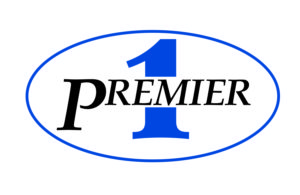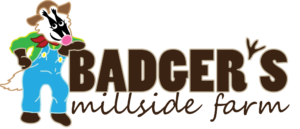Highly Pathogenic Avian Influenza and Pastured Poultry Flocks

 Email marketing for small farms is one of those things that people have strong opinions about. Either you recognize the value, or you have limiting belief about why you shouldn’t send email. In this episode, I take the stance that email is the second half of a technically sound marketing process, and I’ll share some basic ways you can use email to your advantage.
Email marketing for small farms is one of those things that people have strong opinions about. Either you recognize the value, or you have limiting belief about why you shouldn’t send email. In this episode, I take the stance that email is the second half of a technically sound marketing process, and I’ll share some basic ways you can use email to your advantage.
In episode 85, I talked about 10 tips to improve your farm website SEO, and the number one item was to incorporate an email marketing capture into the design of the website. Which email marketing platform you use is irrelevant to the conversation. Email is a tool. You pick tools based on how well it meets your need. If you’re just starting out, your primary criteria will likely be price, which will put you in the free version of Mailchimp, but Aweber and Constant Contact will work too.
The correct answer to “Is email marketing dead for your farm?” is that you spend too much time on Instagram and Facebook. Email is still the number one way for you to reach leads and talk to your customers.
Every marketer knows (or they should know), that Facebook doesn’t show your posts to everybody who is following your page. That’s not the case with email. When you send an email to your list, Mailchimp (as an example) will send the email to everyone on your list. Your email marketing platform doesn’t have an arbitrary algorithm that selects 5% or 10% of your list to get the message.
Whether or not people read your message is the real challenge. We’ll talk about copywriting in a different episode, but for now, know that people’s reading habits are just as diverse as yours. It’s unreasonable to expect that the people on your email list will read every email you send.
Email differs from social media in a critical way. Social media is a diversion (aka a time waster) for most people. Exceptions apply, of course. When your customers read email, they are in the mindset to get stuff done. They’re not looking to have their time wasted.
When you send an email ask yourself, “what do I want this email to accomplish?” Create the email to accomplish that goal. That means you might ask people buy and then provide the link to buy.
While the fluffy bunny pictures are great in the social feed, it’s not good email content, unless you’re explicitly asking people to buy a fluffy bunny.
If you write informational or entertaining emails, how does that tie back to the products you sell? Make it relevant and make sure the people reading know that you have a “solution” to their “problem” (e.g., a nutrition egg for people worried about their health).
Email marketing can be ineffective, but that’s a function of how you implement it. There’s a strong parallel to raising chickens. If you’re chickens don’t perform or die prematurely, it’s not the chickens fault. Email that doesn’t work is not the email’s fault.
Focusing on open rates is just as crazy as focusing on the number of likes. Neither an email open or a social media “like” means anything. It’s the lowest measure of engagement there is, and for email, there are technical reasons why an open may be misrepresented.
Focus on the metrics that matter. If your email is marketing your products, then make sure people know how to buy your products. Provide the link in email (or ask for a direct reply). This can be a hard sell (buy before it’s gone, gone, gone) or a subtler sell (linking the word chicken in your recipe to your order page).
Have that call to action in each email; otherwise, why are you sending the email?
The best metric to measure your farm’s email marketing is sales. Did that email generate sales or questions about sales?
[01:34] Email as a marketing foundation
[05:17] Email addresses are assets
[07:59] I don’t have time to market
[10:40] One topic per email
[11:18] Ask for the sale
[12:35] Use email to solve problems, entertain, and inform
[19:48] Examples of automated email welcoming series
[22:59] Email open rates are crap
[29:22] Evaluating two marketing emails with different open rates


Greg Gunthorp joins the show to talk about his decision to step away from pasture raised chickens. Covid plays into the story, of course, but the challenges started long before this virus came to be front page news.
We also dig into some processing wisdom and reality. Greg talks consolidation and Bill Gates. We dig deep and cover a lot of interconnected ground.

Cynthia Capers, Heniscity Farm in Tennessee, shares her 20+ year journey from hobby chicken keeper to poultry farmer. Twenty years ago, the sight of six Black Australorps brought tears to her eyes. Today, she's serving her community through egg sales, chick sales, pullet sales, and community education. She's incorporated poultry into their rural bed and breakfast and has become an integral resource in her community.
As a black farmer reconnecting to the land and rediscovering her ancestral roots, the journey isn't easy, but Cynthia is right where she needs to be inspiring those around her. She brings the power of chickens to life.
In the show we cover:
Resources:
Nashville Scene Article: Black Farmers Feed Their Neighbors and Connect With Their Ancestors.

I answer a listener question, "How can I make my small laying hen flock more profitable?" With feedback from the community, insights from The Fighting Farmer, and personal experience, we dive deep into ways to prosper from your small flock of laying hens.
The answer divides into three sections: management, pricing, and markets/marketing.
Ask your questions at https://pasturedpoultrytalk.com/contact.

Perdue acquires Pasturebird and becomes the biggest producer in the space. I unpack what it means on this episode and walk through some history.

Listener Chris asks how to utilize an all-in/all-out pullet replacement strategy without duplicating infrastructure while maintaining egg production. To help answer the question, I share insights from Mark Harrison and Dave and Ginger Shields.
The simple answer to the Chris' question is that infrastructure is required to maintain production. Listen in as I discuss the details.

I close out the pastured poultry training series with a live streamed Q&A between Terrell Spencer from The Fighting Farmer and myself. We went live on Facebook and fielded questions from our listeners, and this episode of the podcast includes an edited version of that conversation. If you want to watch a replay of the stream, find it on YouTube.
Before we work into the questions, I offer some thoughts on heritage poultry's potential role in pastured community. APPPA has recently started to focus on breeding specific topics and offers monthly livestreams on breeding. Check out APPPA's work here.
We cover a range of topics on this episode including:
 If you’re looking for fences that work from the people who use them everyday, contact Premier at 800-282-6631 or visit their website to request an informational catalog.
If you’re looking for fences that work from the people who use them everyday, contact Premier at 800-282-6631 or visit their website to request an informational catalog.
 Badger's Millside Farm is a distributor of Ready-to-Lay Pullets. Ask about full beak, non-gmo, certified organic, soy free, and more. Learn more.
Badger's Millside Farm is a distributor of Ready-to-Lay Pullets. Ask about full beak, non-gmo, certified organic, soy free, and more. Learn more.

In Pastured Poultry Talk episode 110, farmer Matt Steinman discussed how he used fermented feed as a solution to feed waste and fines. While fermentation can be a viable solution for some people, it's not the only way to deal with fines.
The problem with fines accumulating in your feeders instead of the birds is that that the chickens miss key nutrients, and they waste feed. The lack of nutrients cause behavioral problems and reduced production. The feed waste costs you money. Soy-free feeds tend to contain more powder and compound the issues with fines.
In this episode I detail a few approaches to dealing with the wasteful fine feed dilemma, which essentially comes down to not adding old feed on top of new feed and avoiding using a bulk feeder. When you use a bulk feeder, you trade convenience for management, and it can compound the problem with feed waste, fines, and overeating (which I don't cover in this episode).

Farmer Matt Steinman (Foothills Farm in Sedro-Woolley, Washington) and Dr. Louisa Brouwer (technical advisor on the trial) share the results of a SARE-funded trial that sought to understand the economic impacts of feeding fermented feed to laying hens. The trial compared a dry feed, wet feed, and a fermented feed and then determined the net difference across to the bottom line.

I close out the pastured poultry training series with a live streamed Q&A between Terrell Spencer from The Fighting Farmer and myself. We went live on Facebook and fielded questions from our listeners, and this episode of the podcast includes an edited version of that conversation. If you want to watch a replay of the stream, find it on YouTube.
Before we work into the questions, I offer some thoughts on heritage poultry's potential role in pastured community. APPPA has recently started to focus on breeding specific topics and offers monthly livestreams on breeding. Check out APPPA's work here.
We cover a range of topics on this episode including:
Stay up to date
For any inquiries, please email us at hello@podcastworld.io